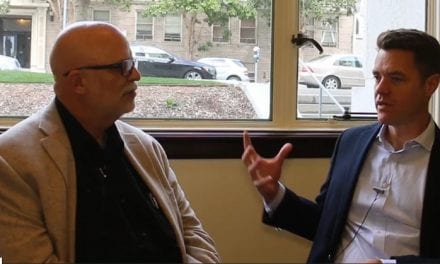By Jack Cumming
Among some cynical employees, the banter is that C-Suite stands for “complacency” because of the tendency of C-Suite leaders to cling to convention, also another “C” word. The Current Crisis, two more “C” words, has snapped any complacency that may have previously infected the C-Suite.
We have seen corporate leaders scrambling to raise cash and to motivate employees. This has opened new flows of creativity and action. The usual project-delaying corporate reservations, and even many inhibiting regulations, have been swept aside. Executives have had to take risks in order to respond to the crisis. What senior living has achieved in the short span of a few months is a tribute to leadership.
Telling the Story
The escalation of the threat, and the demands of the response, have diverted attention away from telling the story of senior living. That story is that executive-led rapid response makes senior living the best choice for aging. One CEO tasked an executive with finding a lab so that all residents and staff could be tested, repeatedly, for COVID-19 . . . and they were. Another CEO rushed to take over a large warehouse in Louisville and chartered an airplane to bring in sufficient Personal Protective Equipment from China to meet needs before China was closed. Still another CEO, sent an airplane to Mexico to get masks.
These are stories that need to be told. The mainstream media thrives on controversy and fear. And that has begun to shape the narrative about senior living. Yet, these CEOs and scores of others like them have stories to be told. One CEO initiated a program to connect all residents with families and others every day by video call. The program begins with a daily email including a picture of their family member happily engaged in the activities that distinguish senior living in the first place. Intriguingly, all of these resident-supportive initiatives are by for-profit operators, which may forebode the future for senior living, which up to now has been dominated by “not-for-profits”.
Anticipating Change
The pace of change throughout the world has accelerated beyond what anyone could possibly have anticipated. It seems unlikely that we will see a return to the leisurely pace of business as usual. Senior living was just beginning to adapt to a new generation of prospects. The baby boomers, now arriving on senior living campuses, bring new lifestyle and technology expectations. Responding to that marketing challenge is driving rapid change. Perhaps, the C-Suite should henceforth be known as the Change-Suite.
One change, a direct result of COVID-19, is greater integration of people’s home and work lives. That is likely to continue. Here are possible changes to ponder.
- The virus has revealed opportunities across the business spectrum, many of which will be pursued for the future. The move toward work-from-home affects central offices more immediately than residential communities, but there is a growing concern, particularly at the residential level, to be sure that employees don’t bring in contagion contracted outside.In central offices, video connectivity provides more business-focused conversations than traditional watercooler exchanges. It is also beginning to breakdown those personality-driven authority silos which can impede the corporate mission. There are news reports that many businesses are considering continuing the work-from-home movement. That home-work approach may impact senior living, too.
- The advantages that have made senior living positive for those who are aging are increasingly seen as positives for people of all ages.Senior living is characterized by freedom from daily chores like cooking and cleaning with standby health and assistance services as needed. It’s now evident that the need for convenient, accessible medical care is not just for the aged, but for people of all ages. Working mothers need convenient childcare that continues even when a child is ill. Moreover, overtaxed working parents can benefit from the same relief from chores that senior living has mastered. The senior living paradigm is well adapted to an age-integrated, multi-family living model.
- The increased literacy about virtual meetings will not go away. The benefits, for instance, of virtual conferences avoid costs and time lost to travel. They also open new development opportunities for workers, technical staff, professionals, supervisors, managers, and executives. Shifting to virtual conferences, supplemented by fly-in-and-out, one-day gatherings when intensive discussion is appropriate, can reduce costs and improve staff competency.
- Let’s hope that telemedicine is here to stay. That can bring Relationship Medicine into our homes – including senior living residences – and can integrate medicine with the other offerings that make senior living the best choice for aging.
Intergenerational Benefits
The possibility of moving away from age-segregated communities toward a more inter-generational living model (item 2 above) has long been talked about but seldom embraced. The one exception to that reluctance to move forward intergenerationally has been among naturally occurring retirement communities that have added age-responsive services. The most prominent example is Morningside Retirement and Health Services, Inc., a naturally occurring retirement community serving the residents of Morningside Gardens Cooperative. Morningside Gardens opened in 1954, and many of those early owners have aged in place.
Of course, multi-family, congregate living isn’t for everyone, but there are working couples with young families who can benefit from the same conveniences that attract the traditional independent living customer to senior living. Moreover, if congregate living evolves to be less age-segregated, it may appeal once more to those who in the past chose the independent living lifestyle.
The 20th century saw an explosion in single-family homes on small suburban lots. Already there is evidence that the 21st century will see a shift toward more multi-family solutions. Projects that are designed to support work-from-home collective living may attract a growing share of the housing market. That will also require multi-family project developers to rethink ownership concepts. People naturally aspire toward homeownership.
The Cooperative Advantage
Cooperative ownership, as it has evolved in New York City, promises advantages for multi-family dwellings that are not available with condominium or single-family homeownership. It is a business approach that can be attractive for both for-profit and nonprofit providers seeking to move toward an intergenerational model. Attracting younger residents will require greater resident empowerment.
Many people do not understand cooperative ownership. It’s really rather simple. There is a corporation that owns a building or buildings. The cooperative owners buy shares in the corporation when they commit to buying a residential unit. The purchase entitles them to a Proprietary Lease to occupy the committed unit. Generally, the Proprietary Leases run for 99 years, though they can run for the sooner of 99 years or life. That can facilitate the re-occupancy of a residential unit at death in a way that is not possible with the fee simple ownership of condominiums.
There are other advantages, though. For instance, if a cooperative sponsor, i.e. the developer or the converter of an existing property, has multiple properties across the nation, the cooperative model could facilitate the needs of families that have to relocate for business or personal reasons. Without the expense of retaining real estate agents to sell the previous residence and to purchase a new home, the cooperative resident could simply arrange with the sponsor to exchange the Proprietary Lease in one location for one in the new location, perhaps with a commensurate adjustment in share ownership. Cooperative ownership provides the same tax benefits as do other forms of homeownership.
Architecture
The pandemic has brought renewed attention to building design. There is a fear that reactive regulation may impose costly and excessive requirements on buildings that house older people. It would be wise for the industry associations to act proactively to preempt the discussion of how best to develop infection responsive regulations.
One approach is to enhance HVAC (Heating, Ventilation, and Air Conditioning) systems to provide negative air pressure in areas where the ill are most likely to be housed. This might be applied to buildings that are built or substantially refurbished after, say, the summer of 2021. Other developments discussed are to increase outdoor gathering spaces and to rethink corridors so that people can maintain distance.
The velocity with which data and information are developed, shared, and must be acted on has sped up dramatically. At times for a CEO, it may feel as a race car driver must feel when pushing beyond the limits of comfortable control. An era of change, like the time into which we are now embarked, takes all the skill that a corporate leader can muster.
Click here for a closer look at cooperative conversions. Click here for an examination of how nonprofit principles can apply in a for-profit organization.








